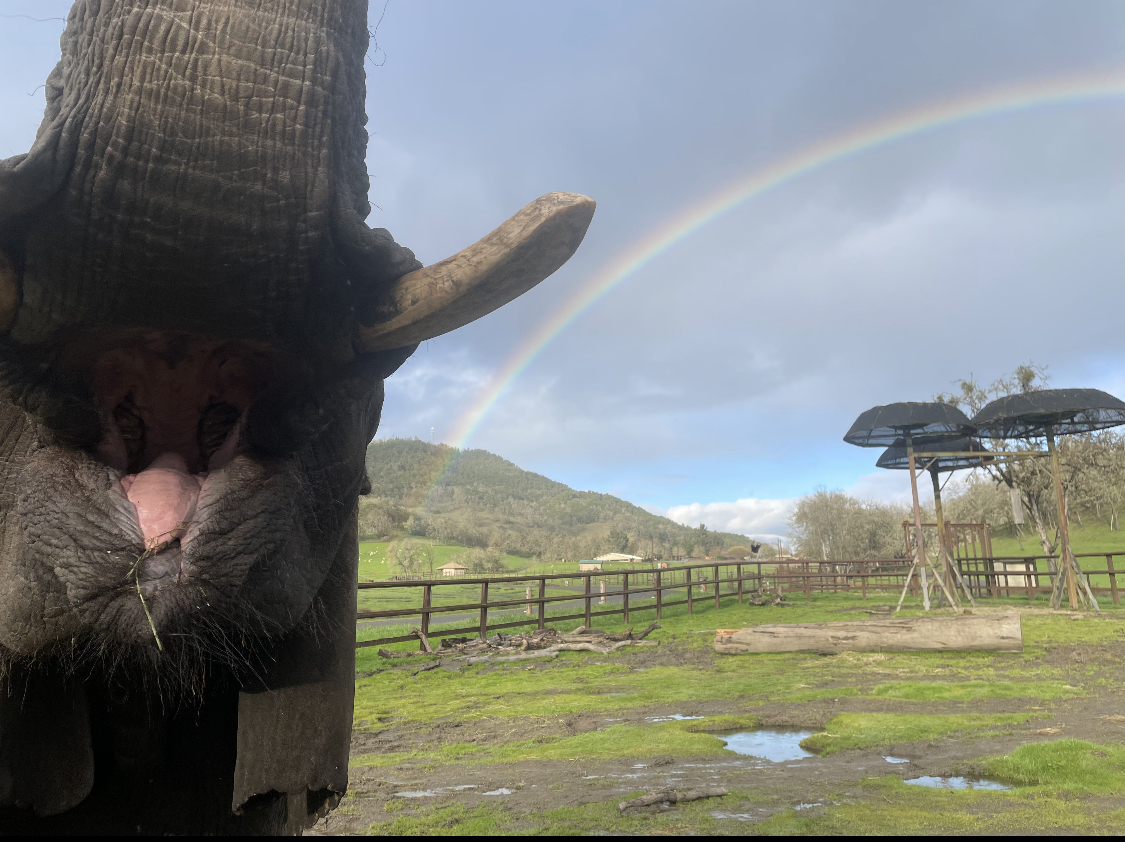- The anatomical structure of an elephant’s tongue and its specialized uses.
- The role of tongue anatomy in elephant feeding behavior and diet.
- Comparison between human and elephant tongue movements and limitations.
- The significance of tongue functionality for elephant health and wellbeing.
- Conservation efforts to protect elephants and promote understanding of their biology.
An elephant’s tongue represents a marvel of nature’s design, finely tuned to its specific needs and lifestyle. Unlike people, elephants cannot stick their tongues out because their tongues are anchored within their mouths, offering them a more restricted range of motion. Despite this limitation, elephants have developed extraordinary ways to manage and manipulate their food, demonstrating the profound adaptability of wildlife species.
Elephants boast tongues firmly attached closer to their throats, which differs dramatically from humans, who can freely move their tongues in various directions. This anchored positioning results from evolutionary adaptations that align with the animal’s feeding patterns and environmental pressures. With a substantial ball muscle, the elephant’s tongue aids in scooping food and ferrying it toward the back of the mouth where its molars are. These powerful teeth are instrumental in grinding dense plant materials, serving as the elephant’s primary tool for digestion.
When observing elephants feed, one might be struck by the skill and precision of their trunks, which often overshadow their tongues’ crucial role. The trunk, an extension of the upper lip and nose, is a multifunctional appendage that can grasp, smell, and even act as a snorkel. Yet, the trunk also works with the tongue to manipulate food within the oral cavity, ensuring a seamless delivery to the grinding molars.
Diving deeper into the muscle composition and mechanics, the elephant’s tongue comprises a complex arrangement of muscles that permit sufficient maneuvering within the confines of their mouths. Their tongues are muscular and hefty, suitable for handling rough foliage, branches, and other fibrous foods that constitute their herbivorous diets. This strength is necessary for the elephant to consolidate and position forage for effective chewing and swallowing.
In comparison, human tongues’ adaptability gives us the versatility to articulate speech, manipulate a broad range of food textures, and engage in behaviors such as licking and whistling, which are irrelevant to an elephant’s survival. The difference in tongue flexibility between humans and elephants underscores the diverse evolutionary paths taken to accommodate different needs and environments.
The tongue’s health is a vital facet of elephant biology and paramount to their overall well-being. Issues with an elephant’s tongue can impair its ability to feed and might result in injuries or infections. In captive settings, such as zoos or wildlife sanctuaries, close monitoring of feeding behavior can help in the early detection of these issues. Caretakers trained in elephant anatomy and behavior are key players in maintaining the health of these majestic creatures.
Understanding nuanced aspects of elephant biology, such as tongue function, is essential for crafting effective management strategies in wildlife conservation. Conservation efforts often focus on large-scale issues like habit loss and poaching. Yet, the minute details of an animal’s anatomy can also inform care, breeding, and habitat preservation approaches.
By developing a comprehensive knowledge of an elephant’s feeding apparatus, conservationists can better gauge the quality of habitats and the adequacy of food resources. For example, the availability of food types suitable for elephant consumption and their specific feeding mechanisms must be considered when managing preserves or designing protected areas.
Moreover, public education campaigns highlighting fascinating elements like an elephant’s tongue contribute to a greater appreciation and empathy for these animals. Increased awareness may lead to more robust support for conservation initiatives from audiences that recognize wildlife’s intrinsic value and intricate biology.
Throughout this endeavor to raise awareness and protect elephant populations, collaboration among zoologists, wildlife managers, conservationists, and educators remains a cornerstone of success. Fostering a deeper understanding of how elephants interact with their environment—from the sweeping motion of their trunks to the hidden work of their tongues—can more effectively shape efforts to ensure the future of these animals.
The conservation and scientific communities continue to prioritize the study and protection of elephants, emphasizing the need for habitats that sustain all aspects of their biology—including the diversity of plants their tongues help them consume. As public interest in elephant welfare grows, a parallel expansion of research and conservation activities can be expected, driven by a shared commitment to safeguarding these keystone species for future generations.
In summary, while elephants may not have the same tongue functionality as humans, their unique adaptations are perfect for their needs, contributing to their ability to thrive in diverse environments. Understanding these differences enriches our knowledge and appreciation of elephant biology and is a testament to the natural world’s complexity. As conservation efforts continue, they must account for all aspects of elephant anatomy and behavior to ensure these majestic animals remain an indelible part of our planet’s wildlife heritage.
*****
Source Description
Unlike people, elephants cannot stick their tongues out. An elephants tongue is rooted to their mouth giving it a limited range of motion. However, their tongues have a ball muscle that they will use to help them scoop and move food to the back of their mouth where their teeth are.😜

